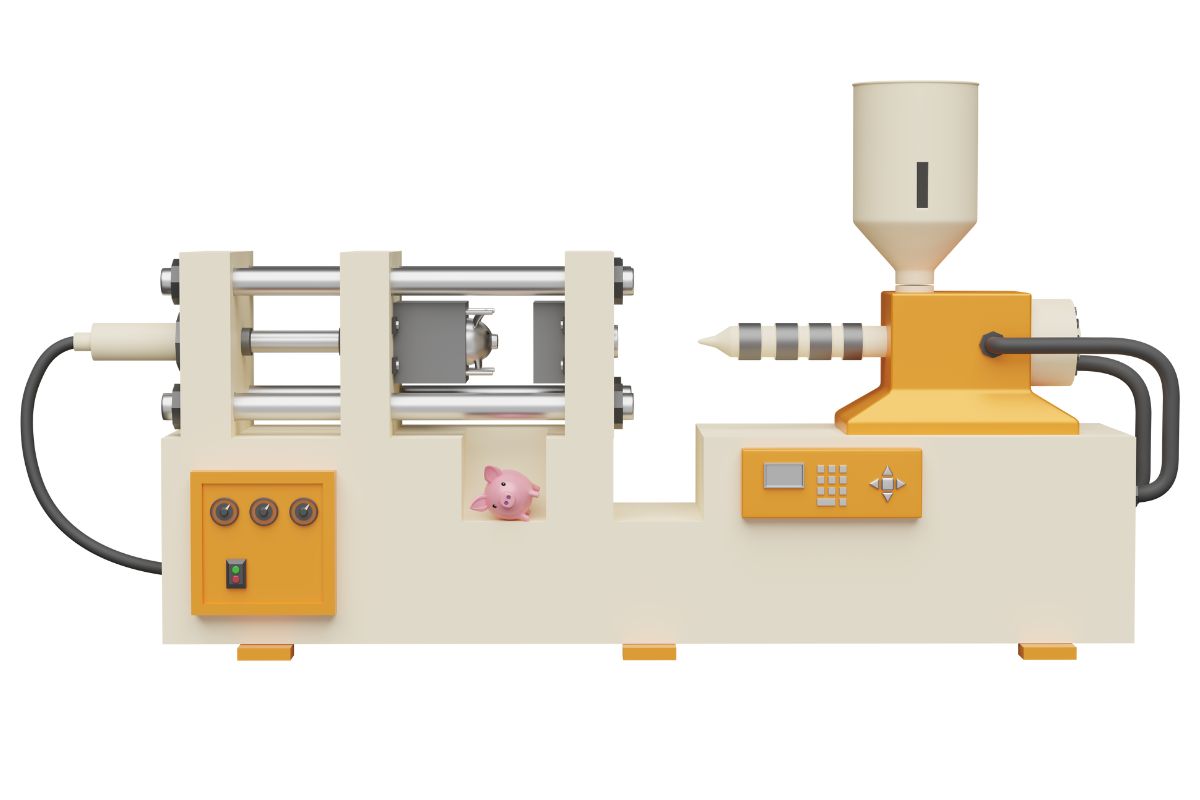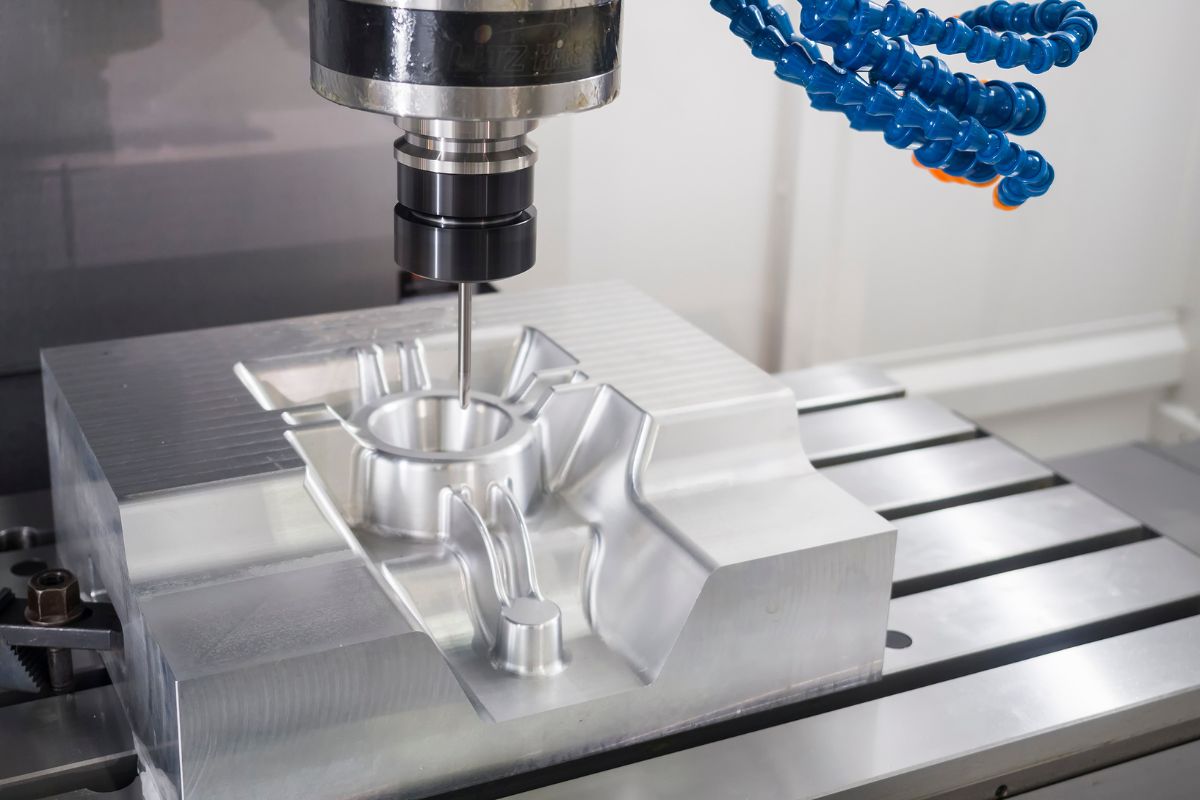For the purpose of incorporating corrosion resistance into high-strength components through the use of CNC machining, magnesium possesses extraordinary properties, the most notable of which are its low density and its good machinability. On the other hand, due to the fact that magnesium is a flammable substance, the process of machining it is rather difficult. In the process of working with magnesium, precautions are taken to safeguard against any potential dangers that may be related with it.
The milling of magnesium results in the production of shavings and dust, both of which are flammable and pose a significant risk to CNC machinists since they are quickly ignited. There is a high probability that the machining process will result in flames or explosions in the workshop if it is not properly regulated. This article provides a comprehensive overview of the primary precautions that should be taken when working with magnesium and other combustible metals. The emphasis is placed on the appropriate procedures for chip clearance and measures, as well as preventative measures, in order to prevent fires in machine shops.
The Obstacles Facing the Machining of Magnesium
When working with magnesium alloys, there are always dangers involved, and these risks need to be addressed in an appropriate manner. The CNC machining of magnesium is associated with a number of dangers, some of which should be acknowledged before beginning the process.
Risk of a Crash
The fact that the fine chips and dust that are formed during the process of machining magnesium alloys are flammable is one of the key challenges that arises throughout this procedure. There is a significant risk of fire occurring in the workshop due to the fact that these particles are highly combustible. Even minute sparks or an excessive amount of heat can easily cause them to catch fire.
Wear and tear on tools
During the process of CNC machining, the magnesium material can cause the cutting tool to become worn down because of its soft and abrasive material properties. This leads to a decrease in the rate of machining as well as an increase in the number of tools that need to be replaced more frequently.
The production of heat
It is also obvious that magnesium alloys have a limited thermal conductivity; hence, heat is concentrated in the area where the cutting procedure is being performed. Additionally, the increased cutting temperature has a detrimental impact on the tool’s lifespan. In addition, it raises the likelihood that the workpiece will get warped and speeds up the rate at which the tool will wear out.
Issues Regarding the Surface Finish
Because burr and machining deformation are present in magnesium alloys, it is difficult to achieve a good surface finish on these materials through machining. In order to obtain the desired high-quality surface finish, it is necessary to address all of these concerns by employing the appropriate machining procedures and selecting the appropriate tools. In order to address these concerns, it is necessary to stick to all of the safety measures, make sure that the tools are used correctly, and obtain further information regarding the characteristics of magnesium and its machining in order to ensure that it is both safe and effective.
Incalculable Advantages Machining of Magnesium Using CNC
In spite of the concerns described above, there are a few benefits associated with the utilization of CNC machining for magnesium. Magnesium is suitable for use in businesses that require light, such as the aircraft and automobile industries, because it improves efficiency and fuel utilization. This is the reason why magnesium is ideal for use in these industries. Despite the fact that it is a material that is extremely lightweight, it possesses a high level of strength. Structures can therefore be made to be solid and slender, thereby requiring less material.
The material magnesium is simple to machine, and as a result, it can be manufactured in enormous quantities. Because the tools that are used are not easily broken, the cost is reduced. As a result of its high thermal conductivity, it is suited for applications in which heat is to be transferred away from the product. One example of such an application is the casing of electronic equipment. In addition, magnesium possesses natural electromagnetic interference (EMI) gasketing properties, which protect sensitive electronic devices from interference.

When it comes to the nature of the environment, magnesium is found in large quantities. It is possible to recycle it, and the quantity of emission that occurs throughout the machining procedures is essentially nonexistent. In addition, the amount of energy required is lower in comparison to that of other metals. Manufacturers who want high performance and at the same time want to decrease the consequences that their CNC machining has on the environment choose magnesium as their material of choice because of its sustainability and the flexibility with which it can be applied in terms of the type of surface finish that can be done, such as painting or anodizing.
Safety Measures That Should Be Implemented When Machining Magnesium Alloys Using a CNC Machine
In order to ensure the safety of the CNC machining of magnesium alloys, it is necessary to observe the following safety procedures for milling magnesium: To guarantee that the machining of magnesium is done in a safe manner, here are some important guidelines.
- Make Sure Your Tools Are Sharp One of the difficulties that are linked with the machining of magnesium is the development of heat. It is vital to use sharp tools when cutting in order to prevent heat accumulation. A great deal of friction is likely to be produced by blunt tools, and these tools may also generate sparks that can result in the igniting of magnesium chips. The use of tools with carbide tips is recommended since these tools are durable and do not ignite easily when exposed to high temperatures.
- Steer clear of tight clearance angles: When working with magnesium alloys, one of the most important things to keep in mind is to steer clear of having near tolerance angles created. As a result of the nature of the element magnesium, high cutting angles produce chips that are both huge and consecutive, which in turn increases the amount of heat produced and the likelihood of any fire breaking out.
The next step is to make broken chips by adjusting your CNC machine so that it produces chips that are small and intermittent. This helps to remove heat from both the cutting tool and the workpiece, hence reducing the likelihood of the material catching fire in the event that it ever comes into contact with an open flame. The use of low feed rates, moderate to high cutting speeds, and modest back rake angles are the tools that should be utilized in order to accomplish this goal.
- Make Use of Coolants That Are Based on Mineral Oil It is recommended that mineral oil coolants be used while machining magnesium rather than water. The surface finish is improved and the risk of fire and explosion is decreased when mineral oil is used. Coolants that are dissolved in water have the potential to corrode magnesium and lead to the production of hydrogen gas that is combustible.
Employ Explosion-Proof Vacuum Systems: In order to assist in the removal of magnesium chips and dust from the CNC machines, it is recommended that you utilize explosion-proof vacuum systems. In addition, discontinuous magnesium chips are combustible; it is essential to remove them from the workplace immediately in order to prevent a fire from breaking out.
- Stay away from water in the event of a fire: If you are trying to put out a fire that is caused by magnesium, you should not use water because doing so will only make the situation worse. Dry fire extinguishers of the Class D variety or dry sand should be used to put out fires caused by magnesium. For this reason, magnesium cnc machining can be performed in a safe manner and with a reduced risk in the workplace if the aforementioned procedures are followed.
How to Determine Which Cutting Tool to Use When Machining Magnesium Alloy with a CNC Machine
When utilizing CNC machining on magnesium alloys, it is essential to use the suitable cutting tools in order to produce the finest possible results along with the highest level of safety. The following is a classification arrangement of the tools that are utilized on a regular basis:

Equipment Made of High-Speed Steel (HSS):
In comparison to other types of tools, high-speed steel tools are not only simple to operate but also economical. As a result of their difficultness and the fact that they may perform interrupted cuts, they are simple to hone and, as a result, are appropriate for a variety of machining processes.
Carbide Tipped Tools: Carbide tools are well-known for their hardness, and as a result, they are highly resistant to wear and have a long tool life. They maintain their sharpness very well, which results in an increased surface polish, higher machining rates, and thus, an increase in productivity.
Tools Made of Coated Carbide: Tools made of coated carbide have carbide as the substrate material, while additional materials, such as titanium nitride, are coated with the substrate. Using these coatings, the hardness and heat stability of the tool are improved, which results in a longer life span for the tool while simultaneously boosting the efficiency of the machining process.
Polycrystalline Diamond (PCD) Tools: PCD tools are among the most robust cutting materials available on the market. They offer the best wear resistance and tool life of any other material. In order to maintain its sharpness for a longer period of time and create a large number of pieces with precision, it is appropriate for high-speed machining processes.
When it comes to CNC Machining, why magnesium?
Magnesium, on the other hand, continues to be utilized in CNC machining due to the fact that it possesses favorable qualities, provided that safety precautions are taken. Magnesium should be considered for the following strong reasons:
Magnesium alloys have an exceptional machinability, meaning that they are simple to machine and can be easily machined using computer numerical control, often known as CNC. Having this property lowers the cutting forces, which ultimately results in an improvement to the tool and more accurate machining.
Components with Complicated Geometries Because the material is easier to work with than other metals, it enables the production of components with intricate shapes. The use of computer numerical control (CNC) machining makes it possible to fabricate magnesium parts according to the precise engineering parameters that are necessary in today’s industries.
Computer numerical control (CNC) technology ensures that designs are duplicated to the finest detail and even the microstructures. This ensures that the designs are accurate and consistent. Using multi-axis machining is extremely beneficial because it makes it possible to curve magnesium alloys in all directions, which is necessary in order to fulfill the criteria of a variety of projects.
Recyclability: It is essential to take into consideration that magnesium and its alloys are recyclable, which greatly contributes to the environmental impact that is associated with the production process. Machining with a CNC machine results in the production of magnesium that can be recycled, which in turn reduces the impact on the environment.
Benefits to the Environment Magnesium is superior to other materials since it does not pose any risks to the environment and it can be recycled. Considering that it is in line with global trends in reducing the negative effects that production has on the environment, it is considered to be environmentally friendly.

Unique Material Advantages: In addition to being simple to machine, it is a lightweight material that possesses high strength, which improves fuel efficiency in the aviation and automobile industries. Additionally, this is especially true with regard to the surface finish, which enables the tool to produce high-performance components.
Magnesium can be machined using a variety of CNC machine methods.
The CNC machining process makes use of a number of specialized techniques in order to effectively fabricate magnesium parts for a wide variety of applications.
CNC Drilling: CNC drilling is the process of drilling holes in magnesium workpieces by utilizing rotating cutters or drill bits at a controlled feed rate. When it comes to applications that require a high level of accuracy in the positioning of holes and the depth at which they should be made in materials, such as aerospace and automobile parts, this method is advantageous.
CNC Milling: While CNC milling is being performed, a rotating cutter is used to cut out the desired shape and profile of magnesium. It also performs well when producing features with thin fillets and small clearances, which is essential in applications that require structures such as industrial equipment, medical equipment, and electronic equipment. Both of these features are essential.
CNC Turning: In CNC turning, a single-point tool is used to cut the workpiece which is made of magnesium alloy. The workpiece is held in place by a chuck while the workpiece is rotated. For the production of cylindrical goods such as shafts, pins, and fittings, this method is ideal because it allows for fine limits and smooth surface finishes to be achieved. In addition, it is utilized in hydraulic equipment and engine components for automobiles.
Laser Cutting: The process of CNC laser cutting involves melting or vaporizing magnesium sheets or plates in accordance with a predetermined procedure for cutting. This technique is favored because it does not require direct contact, it has the capability of producing sharp edges and delicate features, and it is frequently utilized in the production of electronic casings, decorative parts, and other components for aerospace applications.
When it comes to tapping, CNC tapping refers to the use of tapping tools to create internal threads in magnesium components. Additionally, it provides a reasonable level of control over the pitch and depth of the threads, which is an essential feature in fasteners and threaded inserts used in aerospace structures, automotive assemblies, and consumer electronics.
Final Thoughts
The CNM TECH is one of the top 10 CNC machining services in the world that use of CNC machining to work on magnesium leads to the creation of lightweight and durable parts with accurate dimensions and good impact strength. The reasonably good machinability of magnesium can be applied to a wide range of products through various CNC operations. However, operational safety is paramount in magnesium machining as this calls for proper understanding and implementation of safety measures to achieve high-quality production at CNM.
CNM is all in one services company, from part design to final packing goods, if you are looking for product assembly service in China, palstic mold making, die casting manufacturing, or any other custom made electronic products, welcome to contact with them.
